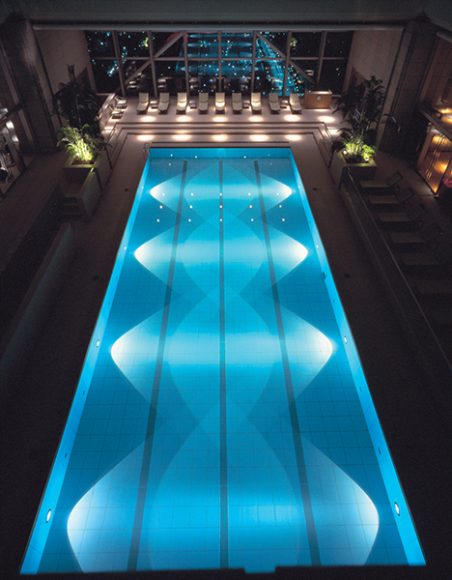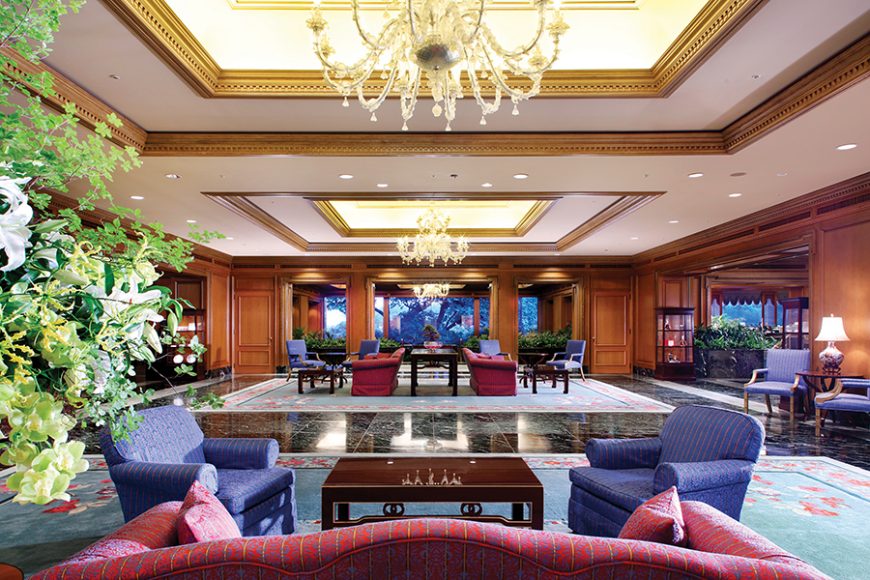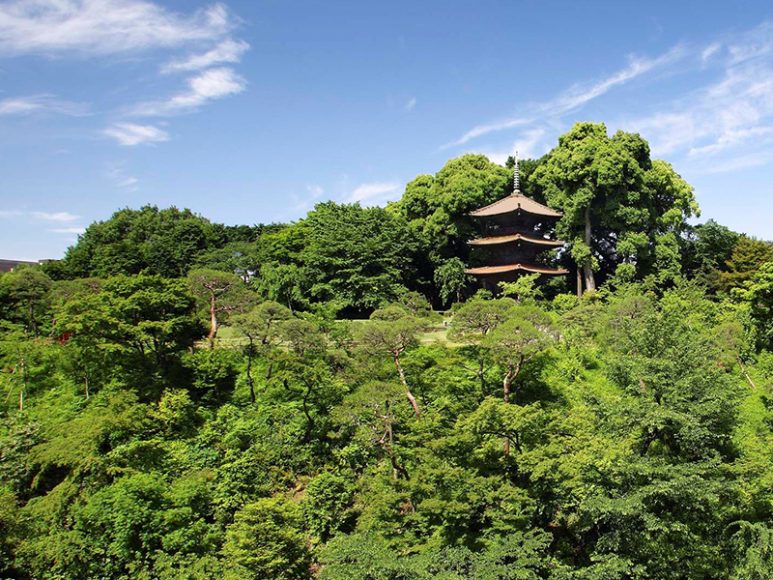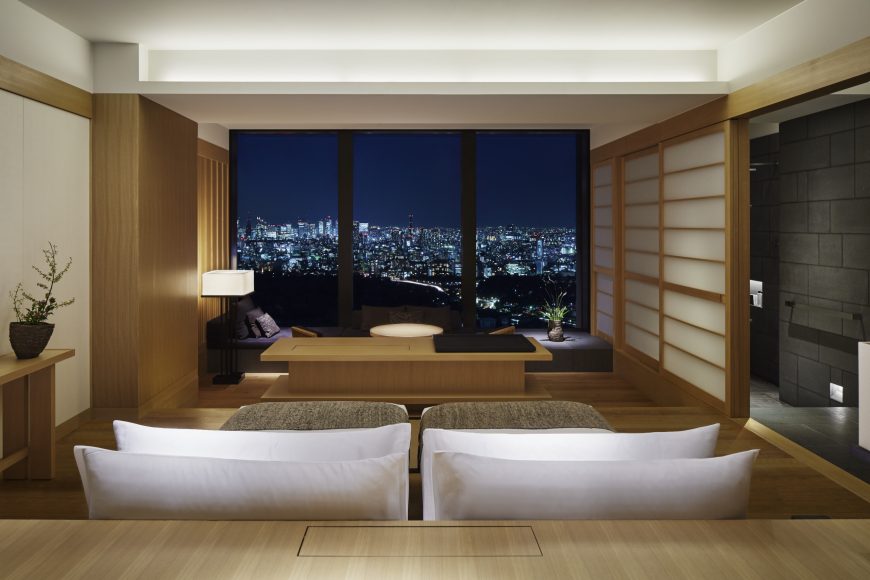For cutting-edge design, superb on-property bars and restaurants and service that anticipates your every wish, Tokyo’s hotels are hard to beat.
Here are my top four:
PARK HYATT, SHINJUKU
Let’s get the obvious out of the way shall we? This is the hotel where Bill Murray stayed at in the film “Lost in Translation.” I enjoyed that movie but unlike Bill’s complex character, the aging movie star Bob Harris, I could never be lonely at Park Hyatt, Tokyo. For one, there’s the smiling staff, affable and outgoing and for two, the people-watching opportunities are endless. The New York bar (coals to Newcastle? I hardly think so. This place is manic.) rocks every evening until the small hours. And for early risers, the Club on the Park, Park Hyatt’s 47th floor state-of-the-art pool, spa and fitness center, opens at 6 a.m. So far, so good — I haven’t yet had a moment to be lonely.
And here’s another thing. Park Hyatt’s rooms are brilliantly well thought out. Six kinds of whiskey in the minibar, a safe the size of a bank vault (Do Park Hyatt guests just have bigger laptops — or jewels? — than other hotel guests?) and — clever this — an electric urn (as opposed to a kettle) for hot water on tap. I also loved the eclectic selection of books on my recent visit, including Bono’s brilliant “Sons of the Fathers,” in which sons talk frankly about their famous dads. To be honest, you could sit by the window of your 51st-floor guest room, Tokyo laid out at your feet, reading Bono and drinking tea from your urn around the clock, but, of course, there are more exciting things to do in Shinjuku. Honestly, Bill — or Bob. You need to be more self-sufficient. For more, visit parkhyatt.com.
MANDARIN ORIENTAL, NIHONBASHI
When I first stayed at the Mandarin Oriental, Tokyo, soon after it opened 11 years ago, Nihonbashi was a ghost town after office hours. Luckily, the hotel was a world within itself, with a total of 15 restaurants and bars and a spa that knocked spots off other hotel spas, even in Tokyo, which has never been short of excellent spas. More than a decade later, though, and Nihonbashi is humming, with great shops and restaurants, the intimate, high-end Coredo mall opposite, and the Mitsukoshi department store, with its spectacular basement food court, just a block away. The irony is, once installed at Mandarin Oriental, I’m still disinclined to leave, no matter what’s on offer in the ’hood.
Occupying the top nine floors of the Mitsui Tower, the 179 guest rooms are among the largest in Japan, and while I’m not crazy about the semi-see-through bathrooms (which can, I admit, be fully screened off for privacy), in every other respect these guest rooms are ace. I love the Lorenzo Villoresi bathroom products and the beautiful yukata (kimono-style robes) provided in two mouth-watering pastel colours. And a great touch are the binoculars, with which I fancy myself a kind of Jimmy Stewart ninja, playing “Rear Window,” Tokyo style —spying on the Imperial Palace garden and the shinkansen bullet trains pulling out of Tokyo station before they gather speed, all from my 34th- floor eyrie.
Mandarin Oriental is still up there, too, in the food stakes, serving to my mind the most dazzling and inventive hotel food in Tokyo. Try its Michelin-starred Tapas Molecular bar, where the 15-course menu is unfurled on a tape measure; or go for classic “Edomae” sushi, prepared by veteran sushi chef Yuji Imaizumi in Mandarin’s 38th-floor, eight-seat Sushi SORA restaurant. Even the breakfast buffet is sublime here (a claim that cannot be made for many breakfast buffets) — sweet, peach pine “milk pineapple” from Okinawa; creamy butter from Hokkaido Prefecture; Caspian Sea yogurt laced with mango and individually cooked orange-hewed eggs from Yamanashi chickens, fed on rice husks and hibiscus. Bliss. For more, visit mandarinoriental.com.
AMAN, TOKYO, CHIYODA-KU
Aman, Tokyo is a horse of a different color. Opened 18 months ago and occupying the 33rd to 38th floors of the Otemachi Building in downtown Tokyo, this 87-room hotel is prodigal with its use of space. Take the lobby: Almost 100 feet high, it rises through the height of five guest floors to around 328 feet. (That’s taller than St. Patrick’s Cathedral.) Think of all the additional guest rooms they could have built. But no, that is not Aman’s style. Because on the grounds that in our overcrowded world space is the last real luxury, Aman, Tokyo, takes luxury to new levels. Conceived as an indoor garden with rocks and trees and surrounded by an engawa, a take on a traditional Japanese veranda, the vast space is strikingly austere, in keeping with the Aman aesthetic.
Guest rooms — also vast — mirror traditional Japanese homes, with shojo sliding doors that maximize light and space. “Every time a Japanese person closes a door,” Sakoto Iwakabe, Aman, Tokyo’s engaging public relations executive, tells me sagely, “he must ask himself whether or not he is closing his heart.”
As for my heart, it belongs in the Aman Spa, which at more than 26,910 square feet is the biggest in Tokyo. Size matters, yes, but so do amenities and this spa has them all, from an array of treatments based on nature and balance, to steam rooms and onsen (Japanese hot baths), to a drop-dead sexy swimming pool, to a fitness center featuring the very latest weight-training machinery and cardiovascular equipment. From Aman, of course, you’d expect nothing less. For more, visit aman.com.
HOTEL CHINZANSO, MEJIRO
If you prefer your feet nearer the ground, finding a luxury hotel in Tokyo can be a challenge. All the big players — Park Hyatt, Mandarin Oriental, Ritz-Carlton, Andaz and Aman, as well as the fabulous Conrad, occupy space starting on the 20th floor, or higher. So let’s zoom in on the lovely Hotel Chinzanso, please, a luxury, low-rise hotel in Mejiro. Still within spitting distance of the central Shinjuku district, Chinzanso boasts its own lush botanical garden, with a 500-year-old chinquapin tree, an ancient pagoda and a waterfall, where, just as I did last month, locals gather after nightfall in the summer months to watch the fireflies.
Yes, it’s a soothing kind of place, Hotel Chinzanso, just oozing charm — rare in a big-city hotel. Guest rooms are old-fashioned in the best sense (read borderline chintz), low tech and utterly delightful with specially sprung Sealy beds for the ultimate good night’s sleep. Of Chinzanso’s nine restaurants and bars, I recommend Miyuki, with its lively teppanyaki counter, while before or after dinner you may well find me in Le Marquis, the hotel’s clubby cocktail bar, where the bar list features 100 different martinis. It was here I made the acquaintance of my new favorite drink, the Rude Cosmo — tequila, triple sec and pineapple. The brilliance of this cocktail is that it knocks you out while simultaneously refreshing you, which may indeed be a metaphor for Tokyo itself.
With room occupancy in the world’s biggest city already at record highs, and the 2020 Tokyo Olympics looming, my advice is to visit soon, while there’s still room at the inn. For more, visit hotel-chinzanso-tokyo.jp.





